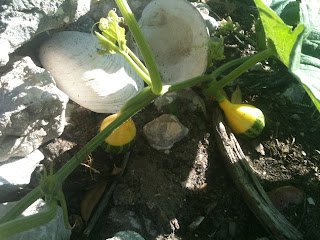Aaarg, the rain! It kept the little ones inside, so we were not able to do our lesson today. It was our assessment day and I am not sure if we will get to see the kids again… sniffle, sniffle… we never got to say goodbye…
It is mind-boggling how fast the semester has gone, how far the garden has come, and (more than anything) how far the children have come. Although we were not able to “objectively assess” them, I can tell how far they have come. Maybe they will not remember exactly what a “decomposer” is, but they have experienced the cycle of food scraps to compost heap to soil to plant food to human food to food scraps… and repeat. Their attitudes towards dirt and bugs have, in most cases, done a complete reversal. Many have gone from screaming yelling about how gross bugs are to screaming and yelling (hey, it’s what kids do after being cooped up in a florescent lighted rectangle for most of the day, and are then exposed to real stimulus outdoors) about how cool they are. Dirt has gone from simply something you don’t want to get on your uniform, to something that plants live in and feed on to make us food.
I will never forget helping Tydarius get over his fear of insects. He was obviously fascinated by the roly-polies. Edging closer to the bugs he would tentatively reach out to touch them, but as soon as contact was made he would let out the most blood-curdling scream and tear off, only to come back to hover over the bugs again. Scooping up a handful of dirt with a few roly-polies in it, I called Tydarius over to me. Holding out the dirt in my cupped hand I asked him to place his hand over mine and on top of the dirt. Holding still, I explained to him that there were roly-polies in the dirt and that they were harmless and more afraid of him than he of them. On the count of three we flipped our hands over, so now Tydarius was holding the dirt. No screams. I removed my hand and left him standing there, marveling at the little gray sectioned bugs snuffling through the dirt in his hand. Soon the chaos of a first grade class digging for insects called my attention elsewhere, but I will never forget the look on his face; a look of utter awe.
I was lucky enough to be born and raised on a Permaculture Land Co-operative, and so these things have always been a part of my reality, but this experience has quickly taught me just how far from natural cycles and food pathways most children are. It has given me great joy in sharing what I know with the students here at the Edible Peace Patch. And the best part is that they love it too!
With that, I’ll leave y’all with the wise words of Wendell Berry:
“Do unto those downstream as you would have those upstream do unto you.” Forest































